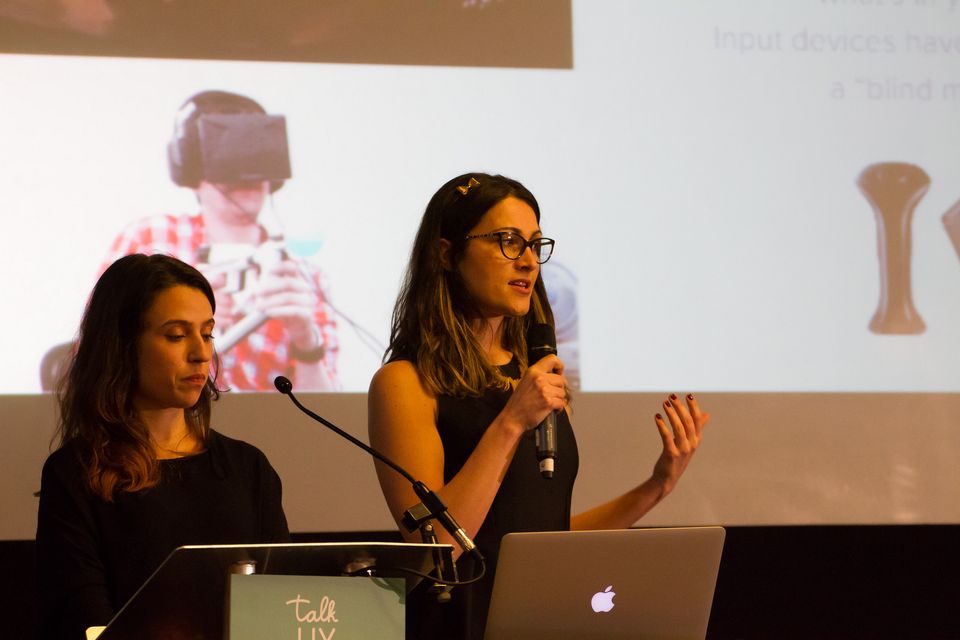Designing for Virtual Reality

I’m writing from Talk UX, the conference on UX aimed at getting new and differing voices heard.
“If you’re wondering why the men have shocked expressions on their faces, it’s because they’re [unexpectedly] seeing the man in a [VR] porn movie.” Perhaps the most out-there (yet I hasten to add, SFW despite the content) case study I’ve ever seen at a conference.
Slide of the day. #talkux pic.twitter.com/aoq6fAB0LK
— Barry Briggs (@quiffboy) March 5, 2015
Laura Cortes and Cyriele Piancastell discussed the current state of VR . For all the attention it’s been getting of late thanks to the Oculus Rift in particular (but also Samsung devices and Google Cardboard to name a few), it’s still something of the Wild West when it comes to actually being used and implemented.
For example, while people are less likely to get motion sickness these days, they still don’t really know how to use it. The pair recently conducted studies where participants could use a VR device for a Grand Theft Auto-like journey. The problem? People had to be prompted to turn their head: they weren’t used to having a 360 degree experience.
There’s still the issue of what VR is actually useful for. Without haptic feedback, this is still a largely disembodied experience: at present it seems most useful for passive experiences such as experiencing a concert.
Finally, it’s easy to go the other way and make a VR experience too immersive. Some designers tried out their VR game with their building’s security guard. The guard became so immersed that in the experience that he leant forward – to end up smack bang on the floor!
"we need to identify the new grammar of UX such as focus, dizziness, being lost…" #talkux @Lolaacortes @cyro
— Vicky Teinaki (@vickytnz) March 5, 2015
Gauging the viability of new tech is always a hard one. Only 7 years ago people were wondering why video calls hadn’t caught on until Skype caught on and Facetime and Hangouts made this a diverse and viable scene. The issue wasn’t technology so much as infrastructure as much as decent broadband speeds and built in webcams. Whether 2014 (or maybe 2015) is the year that VR finally goes mainstream remains to be seen.
Slides are available.
Header image NC-by-SA by Talk UX.
Member discussion